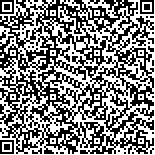| 引用本文: | 梁义,周云龙,盛忠起,邢伟,魏世丞.机械能助渗锌铝渗层的防腐耐磨性能分析[J].中国表面工程,2020,33(2):65~74 |
| Liang Yi,Zhou Yunlong,Sheng Zhongqi,Xing Wei,Wei Shisheng.Anticorrosion and Wear Properties of Mechanical Energy Assisted Zn-Al Coating[J].China Surface Engineering,2020,33(2):65~74 |
|
| |
|
|
| 本文已被:浏览 1912次 下载 956次 |

码上扫一扫! |
|
|
| 机械能助渗锌铝渗层的防腐耐磨性能分析 |
|
梁义1, 周云龙2,3, 盛忠起2, 邢伟4, 魏世丞1
|
|
1.陆军装甲兵学院 装备再制造技术国防科技重点实验室, 北京 100072;2.东北大学 机械工程与自动化学院, 沈阳 110819;3.苏州汇川技术有限公司, 苏州 518101;4.北京特种工程设计研究院, 北京 100028
|
|
| 摘要: |
| 高温高湿高盐雾苛刻环境中螺栓件的腐蚀问题备受广大学者关注。 结合紧固件装配需求,采用机械能助渗技术在 450 ℃温度下制备 Zn-Al 功能渗层。 通过扫描电子显微镜( SEM)、能谱分析(EDS)、显微硬度计、X 射线衍射仪 (XRD)等对锌铝渗层的厚度、物相、硬度和形貌进行表征,采用电化学工作站和摩擦磨损试验机对锌铝渗层的防腐耐磨性能进行研究。 结果表明:机械能助渗制备的锌铝渗层有利于提高基体的防腐耐磨性能。 当锌粉的质量分数为 35%、 铝粉为 15%,保温时间为 4. 5 h,渗炉转速为 7 r/ min 时,涂层呈现出最佳的防腐耐磨性能。 此渗层主要由 Al2O3 、Γ1 相(Fe11Zn40 )和 δ1 相( FeZn6. 67、 FeZn8. 87、 FeZn10. 98)组成,其厚度为 91. 12 μm,表面硬度为 413. 2 HV0. 05,腐蚀电位为 -0. 9286 V,腐蚀电流密度为 2. 2493 A·cm-2,低频区阻抗模值为 2284 Ω·cm2,平均摩擦因数为 0. 3887,磨痕宽度为 734. 66 μm,磨痕深度为 21. 7 μm,磨损体积为 16. 75×10-3mm3。 |
| 关键词: Zn-Al 渗层 机械能助渗 耐蚀性能 电化学分析 耐磨性能 |
| DOI:10.11933/j.issn.1007-9289.20181213002 |
| 分类号:TG174.445 |
| 文章编号:1007-9289(2020)02-0065-10 |
| 文献标识码:A |
| 基金项目:“十三五”装备预研共用技术项目(404010205) |
|
| Anticorrosion and Wear Properties of Mechanical Energy Assisted Zn-Al Coating |
|
Liang Yi1, Zhou Yunlong2,3, Sheng Zhongqi2, Xing Wei4, Wei Shisheng1
|
|
1.National Key Laboratory for Equipment Remanufacturing, Army Academy of Armored Forces, Beijing 100072 , China;2.College of Mechanical Engineering and Automation, Northeastern University, Shenyang 110819 , China;3.Suzhou Inovance Technology Co. , Ltd. , Suzhou 518101 , China;4.Beijing Special Engineering and Design Institute, Beijing 100028 , China
|
| Abstract: |
| Corrosion of bolts in the harsh environments including high temperature, high humidity and salt fog is a crucial problem. The Zn-Al infiltrated layer was fabricated by the mechanical energy assisted technology at 450℃ . The thickness, microstructure, phases, hardness, anti-corrosion and wear properties of the layer were investigated by SEM, EDS, XRD, micro- hardness tester, electrochemical impedance spectroscopy (EIS) and friction and wear tester. Results show that the anti-corrosion and wear resistance are improved after using the mechanical energy assisted technology. The optimum parameters to fabricate the layer are using 35% zinc powder, 15% aluminum powder for 4. 5 h in the infiltration furnace at a rotation speed of 7 r/ min. The main phase of Zn-Al layer is composed of Al2O3, Γ1(Fe11Zn40)and δ1 (FeZn6. 67, FeZn8. 87, FeZn10. 98). The thickness, hard-ness, corrosion potential and current density, and impedance modulus of the Zn-Al infiltrated layer are 91. 12 μm, 413. 2 HV0. 05, -0. 9286 V, 2. 2493 A·cm-2and 2284 Ω·cm2, respectively. The average friction coefficient is 0. 3887, wear scar width is 734. 66 μm, wear scar depth is 21. 7 μm and wear volume is 16. 75×10-3mm. |
| Key words: Zn-Al infiltrated layer mechanical energy aided corrosion resistance electrochemical analysis wear resistance |
|
|
|
|

